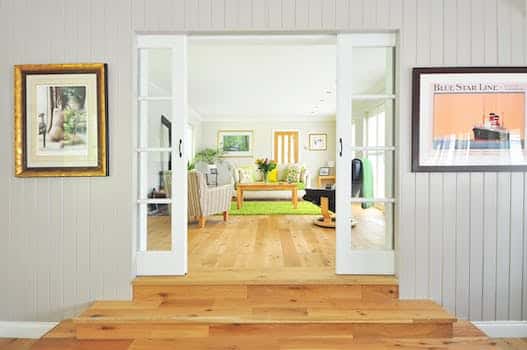People in today’s fast-paced society are constantly on the lookout for novel methods to improve their quality of life. The advantages of default category solutions have made them a popular option for contemporary life. These solutions can improve many aspects of our daily routines. These products, which range from convenient home automation to cutting-edge security systems, are meant to make our lives easier in a wide variety of ways. In this piece, we’ll take a look at some of the cutting-edge default category solutions out there now and talk about how they may improve our daily lives.
- 1. Introduction
- 1.1. Defining Default Category Solutions
- 1.2. Importance of Default Category Solutions in Modern Living
- 1.3. Challenges of Default Category Solutions in Modern Living
- 1.4. Innovative Solutions for Default Category in Modern Living
- 1.5. Purpose of the Article
- 2. Understanding Default Category Solutions
- 2.1. Definition of Default Category Solutions
- 2.2. Types of Default Category Solutions
- 2.3. Benefits of Default Category Solutions
- 2.4. Factors to Consider When Choosing Default Category Solutions
- 2.5. Examples of Default Category Solutions
- 3. Innovative Default Category Solutions for Modern Living
1. Introduction
Our houses are becoming more sophisticated and energy-efficient as technology develops. There are innumerable inventions that can enhance our daily lives, from voice-controlled assistants to automated lighting systems. This article will introduce you to some of the most cutting-edge default category solutions for contemporary life, and explain how they can improve your quality of life and those of your loved ones.
1.1. Defining Default Category Solutions
You should go into your search for a long-term rental with a certain set of criteria in mind. Prioritize your budget and ideal neighborhood before looking at actual properties. Do some homework on the area and rental costs to figure out what’s within your budget range. If you need help finding a suitable long-term rental, you may want to contact a local real estate agent or property manager. In addition, check out online rental sites that cater specifically to long-term leases, as they typically include a more comprehensive inventory of available units. Don’t be afraid to haggle over the rent or seek for other lease concessions if you’re planning to sign a long-term contract.
1.2. Importance of Default Category Solutions in Modern Living
The significance of problems solved by default categories in the present day is growing. There needs to be a system in place that can simply classify and manage all the linked devices and appliances, especially with the rise of smart homes and IoT gadgets. The default categories make it easy to classify devices according to their purpose, location, or other characteristics. Users may easily locate and operate the necessary equipment with their help. In this piece, we’ll have a look at some novel default category solutions that improve daily life today.
1.3. Challenges of Default Category Solutions in Modern Living
The use of default category solutions has persisted for quite some time. However, there are new difficulties in modern life that old methods may not be able to address. The dynamic nature of technology is a constant source of difficulty. It’s possible that default category solutions won’t be able to keep up with the proliferation of new devices and platforms. The requirement for individualization and adaptation presents still another difficulty. These days, consumers want answers that are specific to them and their preferences. These needs could exceed the adaptability of the standard category setup. Finally, scalability is a concern. Growing enterprises and organizations may find that their default category solutions have become too complex to handle. The good news is that new approaches are being developed to solve problems that will help make default category systems more efficient as a whole.
1.4. Innovative Solutions for Default Category in Modern Living
The use of predetermined groups in today’s society is ubiquitous. They are predetermined categories that things can be placed into for easy organization and retrieval. However, default classifications can be restrictive and may not always accommodate the unique requirements of individuals or businesses. Instances like these call for creative answers. We can make our organizing systems more productive by coming up with novel approaches to modifying the default categories they use. This article delves into some of the most promising new approaches to managing your life’s default categories.
1.5. Purpose of the Article
The focus of this piece is on fresh approaches to the default category that can improve daily life. It is crucial to have efficient and effective solutions that improve our everyday routines as our lives become more hectic and technologically dependent. There are many solutions available to help us simplify and optimize our lives, from automated systems to smart home devices. The advantages of some of the most recent developments in default category solutions are discussed in this article.
2. Understanding Default Category Solutions
When making a new WordPress post, the default category is frequently used. However, understanding the purpose and operation of default categories is not always easy. If no additional category is chosen while creating a post, the default category will be used. The time saved by not having to decide on a specific category for each post can be put to better use elsewhere. However, this approach often results in a website that is overrun with posts that don’t belong in any one section. To prevent this from happening, utilize specialized default category solutions. This way, you can keep your site neat and user-friendly while still having full control over its content.
2.1. Definition of Default Category Solutions
Products, services, or information in an online store may have default categories already established for them. The purpose of these classifications is to facilitate consumer navigation and discovery by grouping goods of a similar nature. However, most e-commerce systems’ pre-installed categories lack the versatility and personalization choices that businesses want to present their goods and services in the best light possible.
Innovative default category solutions have arisen to address this problem, providing enhanced functionality like flexible layout options, real-time filtering, and automated classification. With the help of these tools, companies can enhance their internal operations and marketing strategies while also providing customers with a more individualized and exciting purchasing experience.
To sum up, any company that wants to maximize their online presence and compete in today’s digital market must learn about and implement default category solutions.
2.2. Types of Default Category Solutions
When it comes to structuring a website’s content, having a reliable set of default categories is crucial. They give writers a system for organizing their content and help readers quickly find the information they need. For effective content administration, it is essential to have a firm grasp of the many default category solutions available. Some of the most typical examples are as follows:
The first form of category solution is a hierarchical tree, which is used to arrange content by default. It’s possible to further subdivide each category into smaller ones. This is helpful for categorizing content that falls under a broad umbrella that contains numerous subtopics.
Flat categories are easy to understand and apply. They are perfect for sites with few categories because there are no subcategories. This format works well for personal websites and blogs that don’t have a lot of content.
Tagging: Tags have replaced conventional categorization in many contexts. They are descriptive terms used to categorize similar articles. For sites with a lot of material that covers a wide variety of themes, a default category solution like this can be helpful.
As our understanding of what constitutes a default category expands, novel approaches are developing. These tools aim to streamline content administration and improve the user experience. The following are examples of some of the most novel default category solutions for contemporary life:
1. Machine Learning: Algorithms trained with machine data may examine information and classify it mechanically. This results in more precise categorisation while saving content providers time.
Second, customization: personalized default category solutions take into account the user’s tastes and interests to recommend material that will be of most interest to them. E-commerce and news websites that wish to give their readers a personalized experience can benefit from this.
Thirdly, the use of NLP means that the material may be analyzed and the meaning of the text understood. This enables for better indexing and retrieval of results. It works well for sites that feature a lot of user-generated material.
2.3. Benefits of Default Category Solutions
Default category solutions are a cutting-edge method of controlling clutter in the contemporary home. Individuals might save time organizing their belongings by setting a default category. This method has many advantages, including higher productivity, better organization, and less anxiety. People can save time and effort by quickly locating what they need with the help of default category solutions. Furthermore, this method can aid in decluttering and encouraging a more minimalist way of life. In general, options that fall into the “default category” are a sensible and efficient method to streamline daily life.
2.4. Factors to Consider When Choosing Default Category Solutions
Default category solutions should be selected after careful analysis of a number of aspects. The extent to which the solution can be tailored to individual needs is a crucial consideration. Selecting a solution with ample room for personalization ensures it will meet each user’s unique requirements.
Ease of usage is another important aspect to think about. Anyone, regardless of their level of technical expertise, should be able to understand and use the proposed solution. It also needs to be simple to use.
The ability to scale is also crucial. The best solutions are flexible enough to change as the user’s requirements do.
Finally, think about the help and materials that are packaged with the solution. Training materials, customer support, and other resources should be made available to the user so that they may maximize the solution’s potential.
2.5. Examples of Default Category Solutions
Commonplace in today’s society are solutions that fall into the “default” category. They’re made to be reliable and helpful answers to many problems. Some instances of fallback categories and their solutions are as follows:
First, the computer’s predefined folder and file categories.
Email and other forms of electronic communication management systems that fall into the “default” category.
The use of predefined groups as the standard for cataloging digital media.
Category four solutions for handling scheduling and contact information.
These are but a few of the many possible answers to the default category problem. They’re simple to employ, and they can improve your efficiency and order in the workplace.
3. Innovative Default Category Solutions for Modern Living
If you want to know what’s happening in the home remodeling market right now, Innovative Default Category Solutions for Modern Living is a must-read. Solutions like smart home gadgets and energy-efficient equipment can help us live more comfortably and efficiently. Smart lighting systems, programmable thermostats, and voice-activated assistants are just a few examples of the default category solutions that are becoming increasingly common in contemporary homes. These gadgets improve our quality of life by making our houses more convenient and comfortable. We can anticipate even more novel default category solutions for contemporary life as technology continues to develop at a breakneck pace.
3.1. Smart Home Automation Systems
As a digital nomad, using discount websites and apps can be a fantastic way to save money on lodging. Airbnb, Booking.com, and Hostelworld are just a few of the many websites that provide cheap lodging for tourists. Apps like Hopper and Skyscanner make it easy to search for cheap flights and accommodations. These tools will help you stick to your travel budget without sacrificing comfort or convenience.
3.2. Intelligent Energy Management Systems
The installation of IEMS (Intelligent Energy Management System) in contemporary houses is on the rise. Homeowners can save a lot of money by using these technologies to track and manage their energy consumption. Connecting an IEMS to a smart home system paves the way for remote monitoring and management from a mobile device. In addition, IEMSs can be set to adapt energy use based on occupancy and time of day, significantly enhancing energy efficiency. IEMSs are a practical option for contemporary households, especially in light of the current trend toward minimization of environmental impact.
3.3. Sustainable Waste Management Systems
The importance of responsible garbage disposal is growing in today’s society. With a growing population and finite resources, it is critical that we identify effective strategies for waste minimization and long-term waste management. Waste-to-energy systems, composting, and recycling are examples of cutting-edge technologies that contribute to sustainable waste management. These systems can recycle trash into usable fuel or other products, cutting down on the amount of garbage sent to landfills. We may make a better future for ourselves and future generations by adopting these cutting-edge trash management strategies.
3.4. Efficient Water Management Systems
As water shortage becomes a global issue, effective water management methods are crucial. The use of greywater recycling systems, smart irrigation systems, and rainwater harvesting systems are all examples of cutting-edge approaches to contemporary life. Rooftop rainwater can be collected and stored in rainwater tanks for use in indoor and outdoor applications including watering plants, flushing toilets, and doing laundry. Shower, sink, and tub water can be recycled and reused in non-drinking applications like flushing the toilet or watering the plants. The incorporation of meteorological data and soil moisture sensors in smart irrigation systems allows for more efficient watering schedules and less water waste. These methods of water management not only contribute to a more sustainable future by reducing water bills, but also by conserving water.
3.5. Innovative Transportation Solutions
The need for cutting-edge transportation innovations is ever-present in today’s society. Traditional modes of mobility, such as vehicles and public transit, are becoming increasingly crowded and congested as urbanization and population expansion push more people into metropolitan centers. As a result, there is a pressing need for novel approaches to transportation that are less taxing on the environment while still meeting people’s mobility needs.
Electric vehicles are one of the most innovative and promising transportation options. Compared to conventional gasoline-powered vehicles, electric vehicles produce far less pollution and are therefore growing in popularity. In addition to being more environmentally friendly, electric vehicles save money in the long run because of their low operating and maintenance costs.
Ridesharing is another forward-thinking method of transportation. The popularity of ride-sharing services like Uber and Lyft has risen in recent years because they are more practical and affordable than taxis. Furthermore, carpooling helps lessen traffic and cut down on greenhouse gas production.
The usage of bike-sharing programs and the construction of “smart cities” are two further examples of creative approaches to transportation. As a cost-effective and environmentally friendly mode of transportation, bike-sharing programs are gaining popularity in metropolitan areas. Transportation systems in “smart cities” are more environmentally friendly and cost-effective than ever before. This includes the creation of more efficient and cost-effective public transit systems, such as the use of sensors to monitor traffic flow and alter traffic signals accordingly.
In sum, cutting-edge modes of mobility are fundamental to 21st-century existence. Congestion may be reduced, sustainability enhanced, and more affordable transportation options made available to consumers and companies with the help of these technologies.
Conclusion
In order to keep up with the hectic pace of modern life, people need access to creative default category solutions that can help them save time and effort. By adopting these methods into our daily lives, we can save time and effort while also increasing productivity and staying on top of our obligations.





